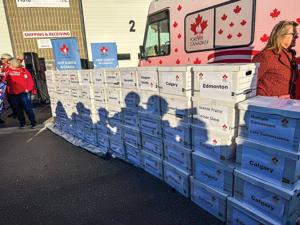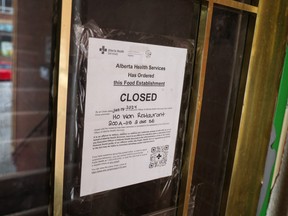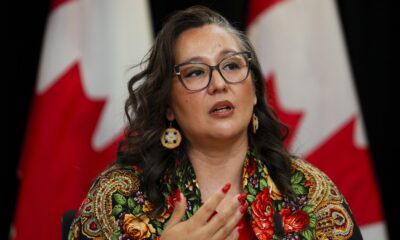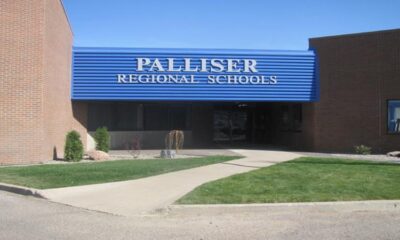Business
Alberta’s Education Funding Crisis: Public Schools Struggle Amid Surplus
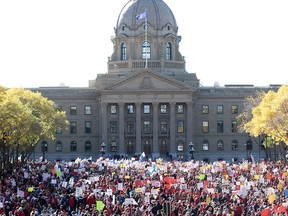
The Alberta government is facing scrutiny over its funding priorities as public schools grapple with significant financial challenges. Critics argue that while public education suffers from inadequate resources, the province has significantly increased funding for private schools. This issue has ignited a heated debate among educators, parents, and policymakers regarding the future of education in Alberta.
The situation is stark. Public schools, which cater to approximately 93 percent of Alberta’s K-12 student population, are struggling to provide adequate education amid chronic underfunding. In contrast, private schools, which serve fewer than 6 percent of students, have seen their government funding rise by 42 percent since the 2023-24 academic year. According to C.J. Young from Edmonton, this trend reflects a troubling diversion of public money, raising questions about how education dollars are spent.
Alberta currently holds the distinction of having the lowest per-student funding for public education in Canada. A recent report indicated that the province allocated over $300 million to private institutions in 2024, which often charge tuition and have the discretion to select their student bodies. This practice is seen by many as a subsidy for exclusivity rather than a genuine effort to enhance educational choice.
Financial Disparity in Education
Despite posting $28.1 billion in budget surpluses over the past four years, Alberta’s education funding continues to lag behind other provinces. Critics note that even with the province’s reported $6.5 billion deficit this year, Alberta still has more than $21 billion in net surpluses. By comparison, provinces like British Columbia, Ontario, and Quebec are operating under financial constraints yet still manage to allocate more generous funding to public education.
Sean Sommerfeld from Edson highlights that Alberta’s government, which oversees the highest GDP per capita and the lowest debt in Canada, should be prioritizing education funding rather than reducing it. He argues that the ongoing diversion of funds to private schools undermines the quality of public education and compromises the future of Alberta’s children.
Jessica Mackay from Edmonton points to a shift in educational policy under Premier Danielle Smith. She claims that the government has adopted an American-style curriculum, which has coincided with cuts to public school funding, including teacher salaries and resources. This has resulted in a dramatic increase in taxpayer funding to charter schools, from $42.3 million in 2022 to $408 million in 2024. Mackay contends this approach erodes equal access to education and undermines Alberta’s commitment to public schooling.
The Road Ahead for Alberta’s Education System
The ongoing debate around education funding in Alberta raises critical questions about the province’s priorities. As public schools face overcrowded classrooms and complex learning needs, advocates argue that a realignment of funding is necessary to support the majority of students who attend these institutions.
The future of education in Alberta hinges on the government’s willingness to address these disparities. Without a shift in funding strategy, many fear that the quality of public education will continue to decline, leaving vulnerable students without the resources they need to succeed. As the province navigates its financial landscape, the commitment to equitable education for all students will be paramount in shaping Alberta’s future.
In conclusion, the debate over education funding in Alberta is not just about numbers; it is about the values that the province chooses to uphold. As public schools continue to struggle, the call for a reassessment of funding priorities grows louder among educators, parents, and concerned citizens alike.
-

 Politics4 weeks ago
Politics4 weeks agoSecwepemc First Nation Seeks Aboriginal Title Over Kamloops Area
-

 World5 months ago
World5 months agoScientists Unearth Ancient Antarctic Ice to Unlock Climate Secrets
-

 Entertainment5 months ago
Entertainment5 months agoTrump and McCormick to Announce $70 Billion Energy Investments
-

 Science5 months ago
Science5 months agoFour Astronauts Return to Earth After International Space Station Mission
-

 Lifestyle5 months ago
Lifestyle5 months agoTransLink Launches Food Truck Program to Boost Revenue in Vancouver
-

 Technology3 months ago
Technology3 months agoApple Notes Enhances Functionality with Markdown Support in macOS 26
-

 Lifestyle3 months ago
Lifestyle3 months agoManitoba’s Burger Champion Shines Again Amid Dining Innovations
-

 Top Stories2 months ago
Top Stories2 months agoUrgent Update: Fatal Crash on Highway 99 Claims Life of Pitt Meadows Man
-

 Politics4 months ago
Politics4 months agoUkrainian Tennis Star Elina Svitolina Faces Death Threats Online
-

 Sports5 months ago
Sports5 months agoSearch Underway for Missing Hunter Amid Hokkaido Bear Emergency
-

 Politics5 months ago
Politics5 months agoCarney Engages First Nations Leaders at Development Law Summit
-

 Technology5 months ago
Technology5 months agoFrosthaven Launches Early Access on July 31, 2025



